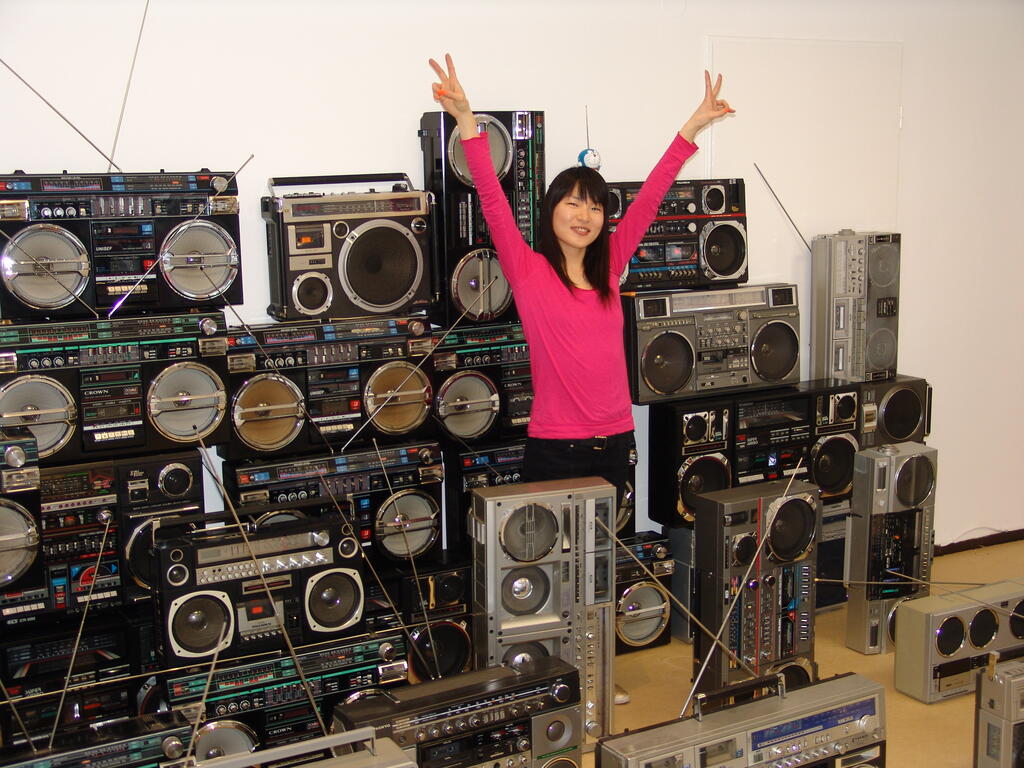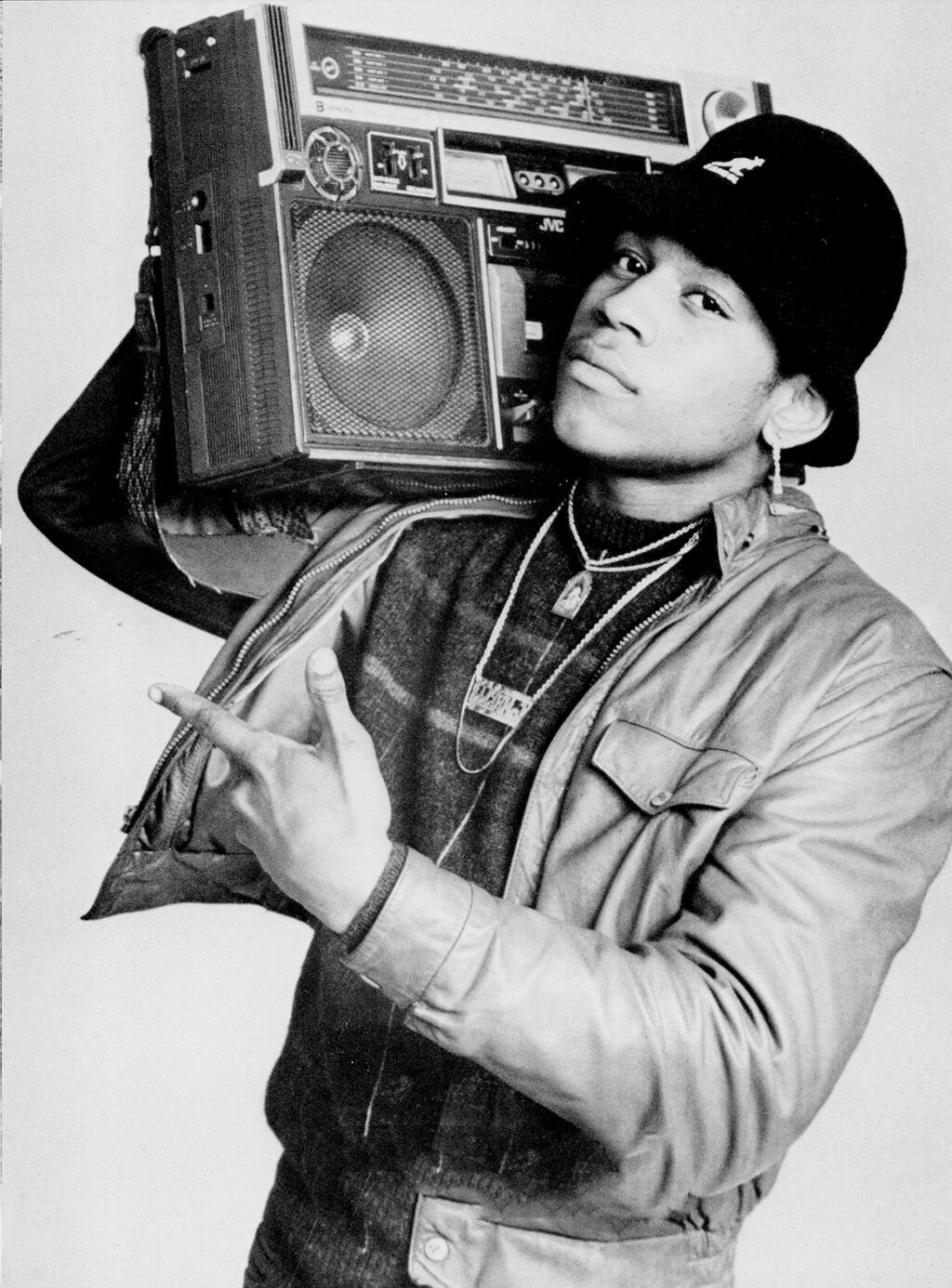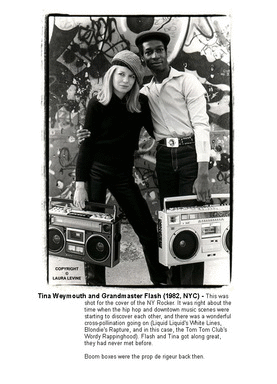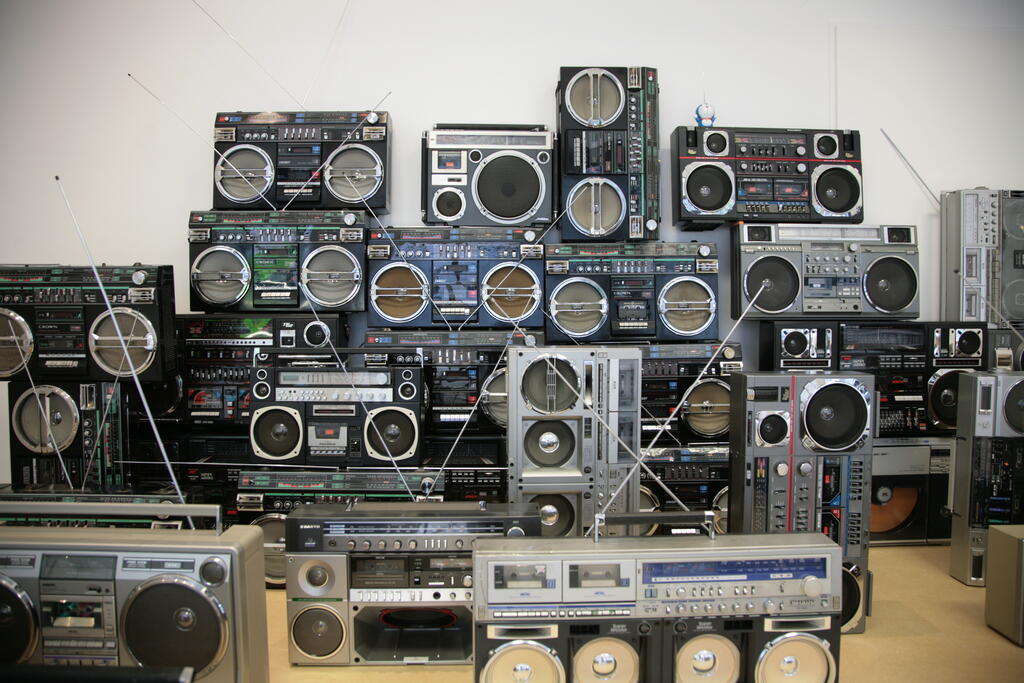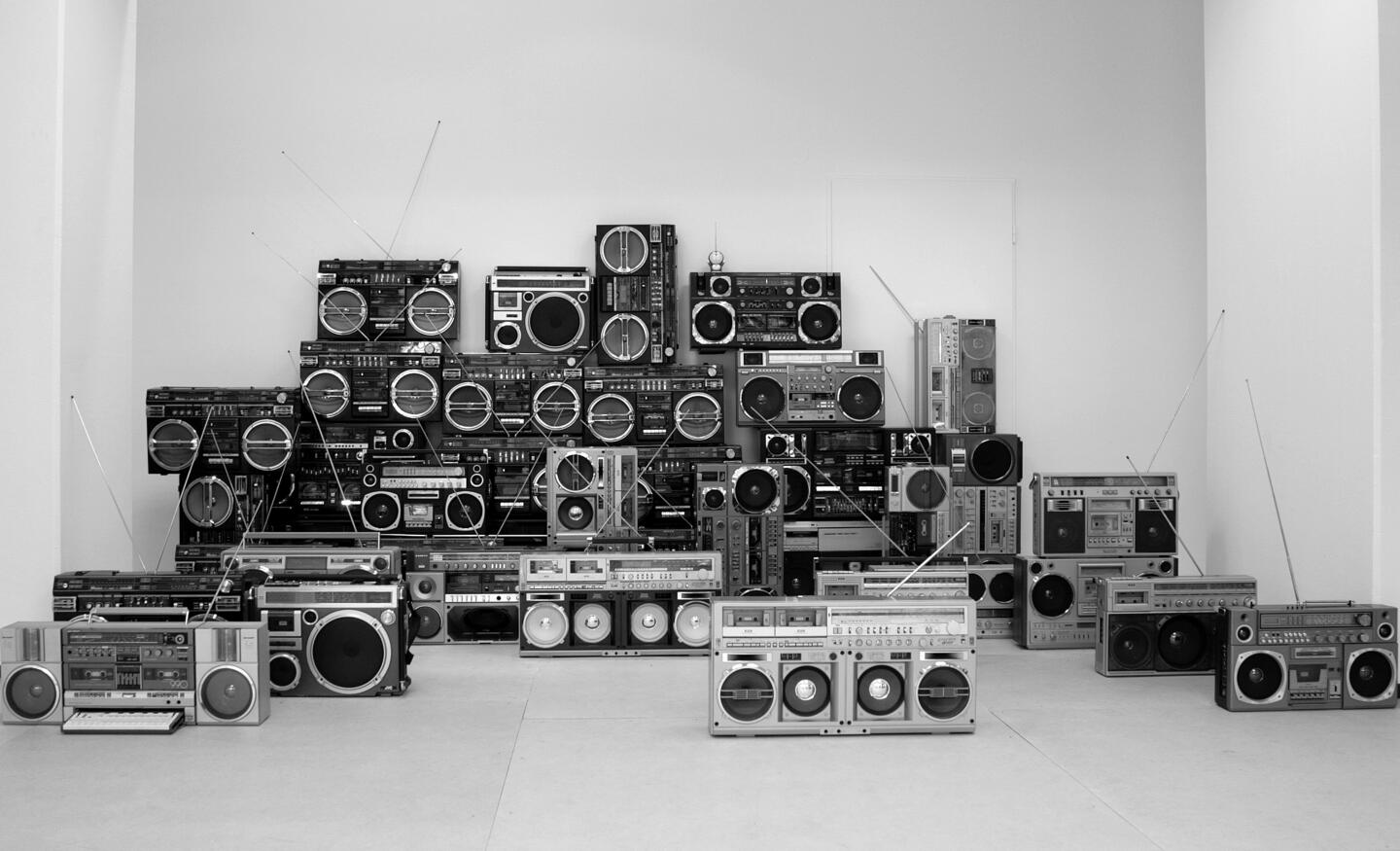
GHETTOBLASTER
Nostalgic dreamin'
My radio, believe me, I like it loud
I'm the man with a box that can rock the crowd
Walkin' down the street, to the hardcore beat
While my JVC vibrates the concrete
I'm sorry if you can't understand
But I need a radio inside my hand
Don't mean to offend other citizens
But I kick my volume way past 10.
I Can’t Live Without My Radio—LL Cool J 1985
Back in 1985 when LLCoolJ released his debut album Radio, street culture in the US was alive with the sound of what was colloquially termed the “boombox” or ghettoblaster, depending on where you were from (In central Canada where I grew up, we called them BFR’s—big F*cking radios!). The cover of LL’s album reiterated the prominence of his hit single “I Can’t Live Without My Radio” by depicting a closeup of a JVC RC-M90(Image 1), one of the biggest and best performing radio cassette players of its day.
Today, in this new millennium, 80’s culture has returned with a vengeance, and in light of this resurgence an interest in and around old school culture, so its no surprise that interest in boomboxes as cultural icons has resurfaced. Boomboxes these days adorn sneakers, T-shirts, shoulder bags, necklaces, and of course album covers and videos, from Armand Van Helden to Madonna.
I was moved to write about these radios as I collect them and have found a hobby bordering on obsession! I have learned as much as I can about them, taking them apart, as well as playing with them and using them in my everyday life. Sharp was a great innovator and is responsible for an amazing variety of radios, although I have a personal bias towards JVC, simply because in my youth JVC was the best brand available in my community, and I still feel a strong connection and nostalgia for their products. But what’s in a name? Many radios and indeed other electronics from this time were rebadged by rival companies, so you might see the same radio with 3 or 4 different names. There are many radios and many brands that are excellent for all sorts of reasons, I will try to give you some examples of what I consider technological or design innovations from back in the day.
JVC, or the Japan Victor Company launched themselves into the portable radio cassette player/recorder market in the late 1970’s when they released the amazing RC-550(Image 2). Dubbed “El Diablo” by the Latino community, this giant monobox was devilish. It had a 10” woofer, a 4” midrange, and a 2 “ tweeter, separate bass and treble controls, and a big strong handle as well as a shoulder strap. It had roll bars on the sides that extended forward to protect the speakers and even had shortwave bands as well. This unit was built for the streets, and signaled a change in the mindset of portable design, although not a stereo player, this unit was BIG!
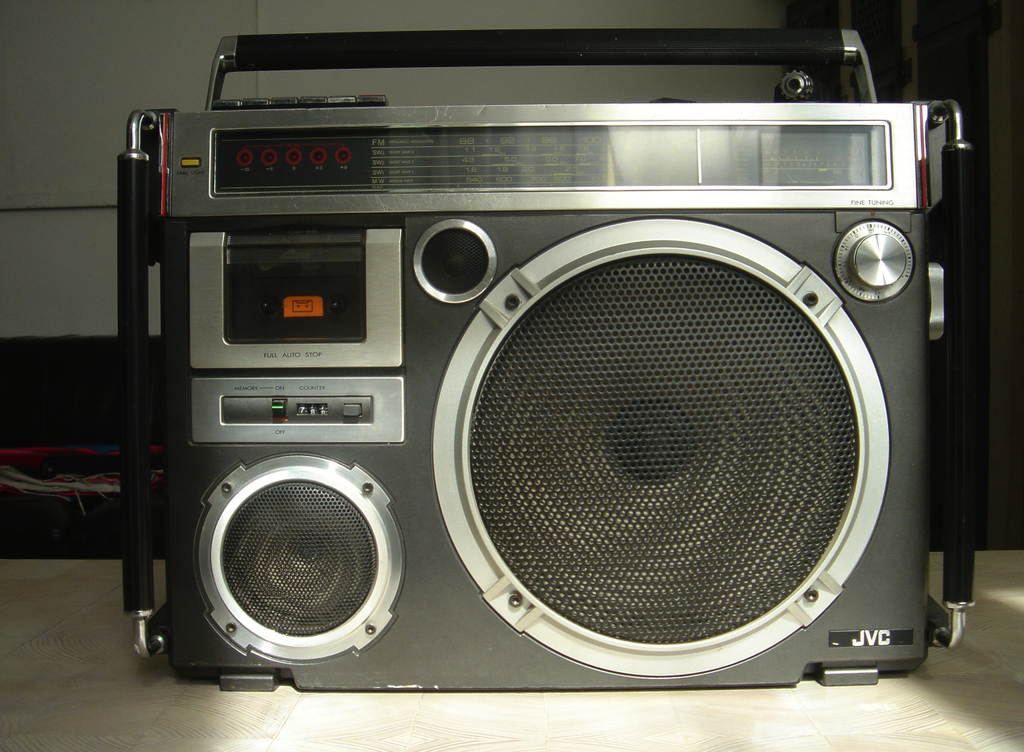
JVC followed up the success of the RC-550 with another great radio destined to become the classic model for most boombox design, the RC-M70(Image 3). This radio was a stereo player, with 4 speakers, two 6” woofers and two 2” horn tweeters. All the slide controls and buttons were on top, including a click down music search function and a loudness button. A great sounding(40 watts of consumptive power), cool looking unit it had tremendous build construction( a JVC trait), and great bass response at a time when bass heavy music, funk and R & B were merging their flavors to begin the Rap/ Hip Hop movement. This radio also had a special seat belt styled click in shoulder strap and even had a special carry bag as well. At 22” long and 12” tall, a big radio for certain, but still portable. These radios were meant to be carried around the streets!
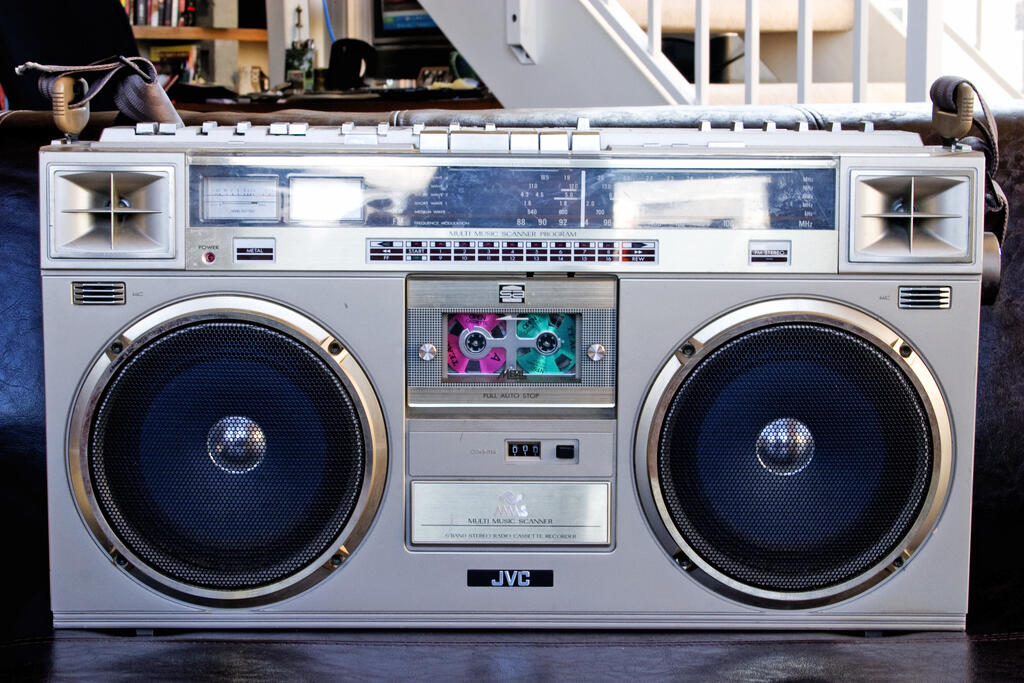
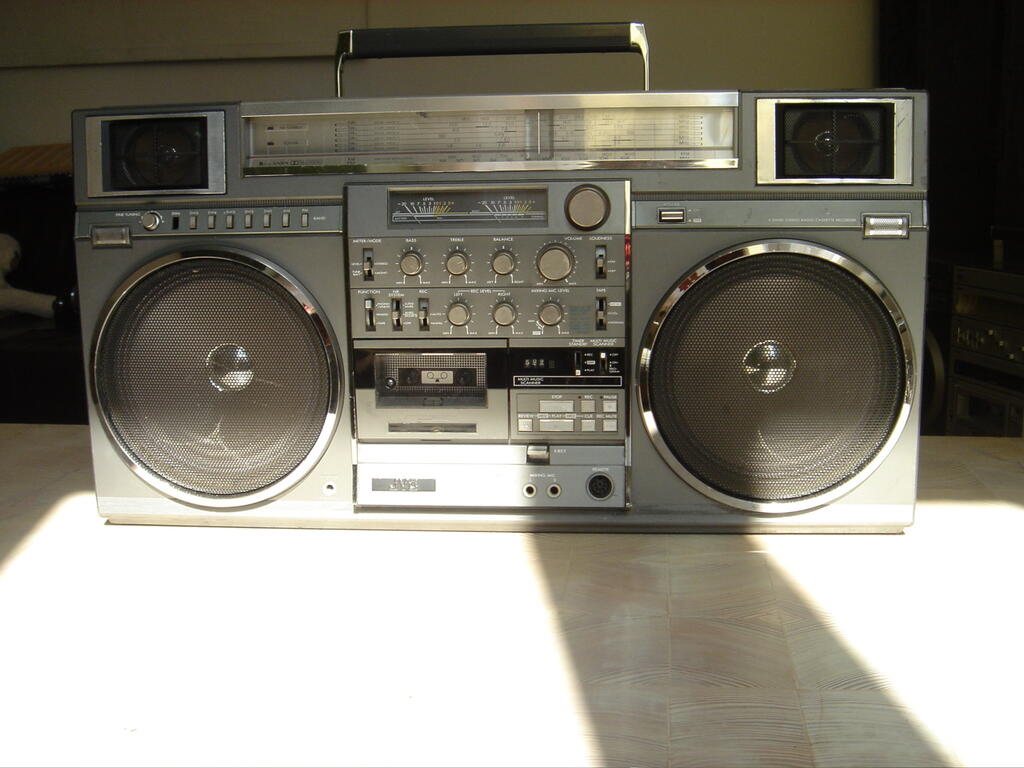 JVC was not done yet as they introduced the flagship of their line in 1981, the RC-M90(Image 4), the radio that inspired the LL COOL J song. This was it, 8” woofers, 3” tweeters, a full logic two motor cassette deck(meaning computer chip controlled as opposed to mechanical buttons), 8 radio bands, a more sophisticated LED lit music search, and huge dimensions, 26” x 14”, this radio was perhaps the best performing loudest radio of its time (G.O.A.T.?). It also had Super ARNS noise reduction to further refine its sound, as Dolby was all the rage. The unit also had an optional wired remote control with a 16 foot cord to enable long distance(somewhat anyway) manipulation of the cassette deck.
JVC was not done yet as they introduced the flagship of their line in 1981, the RC-M90(Image 4), the radio that inspired the LL COOL J song. This was it, 8” woofers, 3” tweeters, a full logic two motor cassette deck(meaning computer chip controlled as opposed to mechanical buttons), 8 radio bands, a more sophisticated LED lit music search, and huge dimensions, 26” x 14”, this radio was perhaps the best performing loudest radio of its time (G.O.A.T.?). It also had Super ARNS noise reduction to further refine its sound, as Dolby was all the rage. The unit also had an optional wired remote control with a 16 foot cord to enable long distance(somewhat anyway) manipulation of the cassette deck.
While JVC made some great boomboxes, they were certainly not alone. Panasonic, Sharp Fisher, Aiwa, and Toshiba also made valuable contributions both stylistically and technologically as these portable players flooded the market.
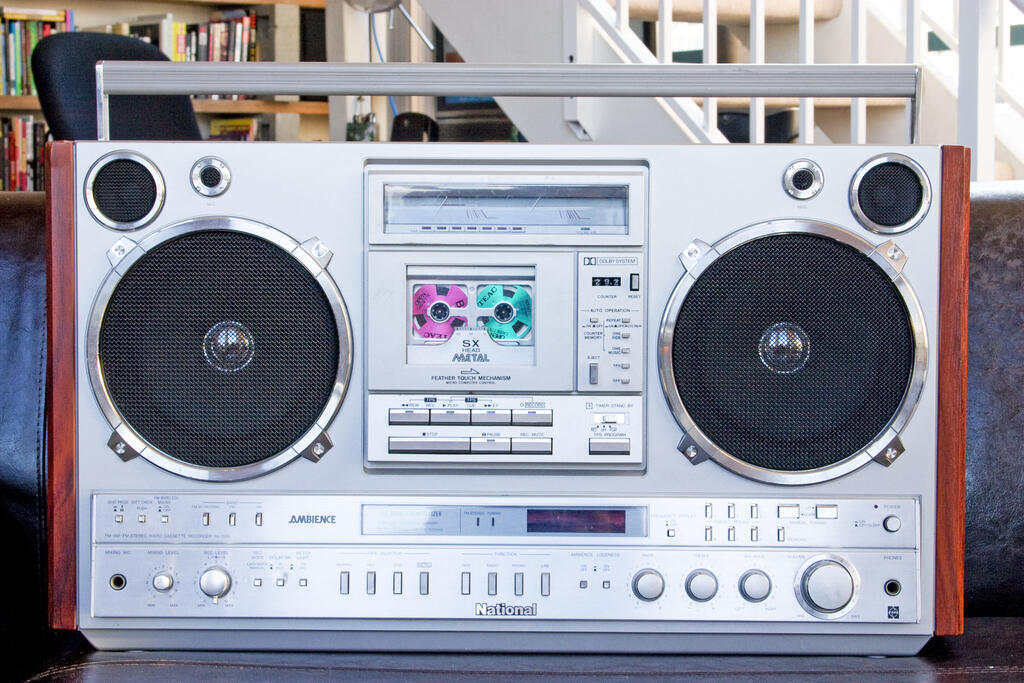
In terms of design innovation and style, one needs look no further than the Panasonic RX-7200(Image 5), a beautiful single decked, logic controlled player that boasted both a stylistic variant—the upside down design whereby the radio tuner was located along the bottom portion of the unit instead of the top—and a technological innovation, a digital tuner for the radio with a green LED readout. Sized between the M70 and the M90, it also had wood paneled sides and could be purchased with a matching record stand that the 7200 mounted on top of to create an unbroken wood panel—this was not a radio for the streets, but a radio for a posh study or library, a beautiful combination of high technology and organic warmth.
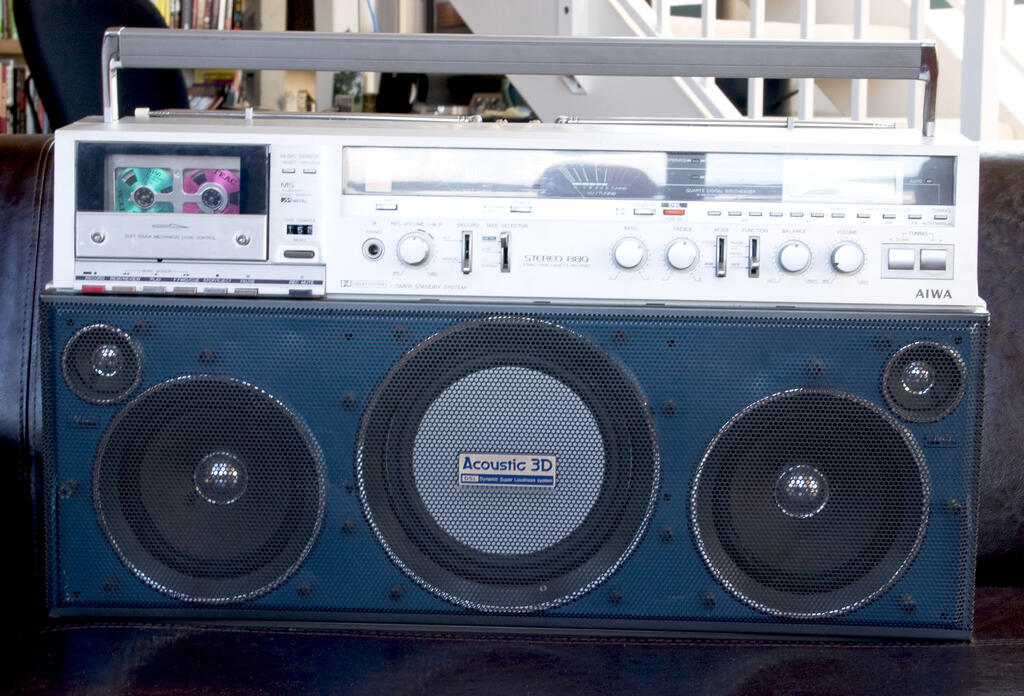
Aiwa released several beautiful units, but perhaps the best one was the CS-880(Image 6). Medium sized(22” long), it had its single cassette deck thrust up in the left hand corner and in the middle had a 7” passive radiator designed to enhance the sound coming from the twin 5 “ woofers and 2” tweeters. The Aiwa had an amazing tape deck, this unit boasted wow and flutter on par with high end home cassette players, which resulted in amazingly clear sound. Great build quality, elegant, compact design and amazing sonic performance, Aiwa made a name for themselves as smaller, high quality players. This was again a unit that seemed more at home in a home, portable yes, but not for the street.

Getting back to the street, we have to include one of the biggest and most famous radios of the early 80’s, the Conion C-100F from Coney-Onkyo(Image 7). This was a beast! 31” long 16” tall, it had all the street cred one could imagine, as well as some design innovations. First of all, it had two cassette decks, but instead of making them tandem, they were stacked on top of one another with the top deck being a horizontal slit for the tape to slide in through a spring loaded door. It had 3 pairs of speakers, two 8 “ woofers, two 4” midranges and two 2” tweeters—a full range of sound production. Two analogue VU meters, and LED meters as well, it was designed to not just catch eyes but hold them hostage! As if this was not enough, in case its size, loudness and killer bling bling looks overcame your morals, it had an incredibly loud motion alarm feature that when set, went off if someone moved the radio. Despite the political incorrectness of the term, this was a ghettoblaster, a consummate example of its time and was featured in several films including Beatstreet and Breakin’.
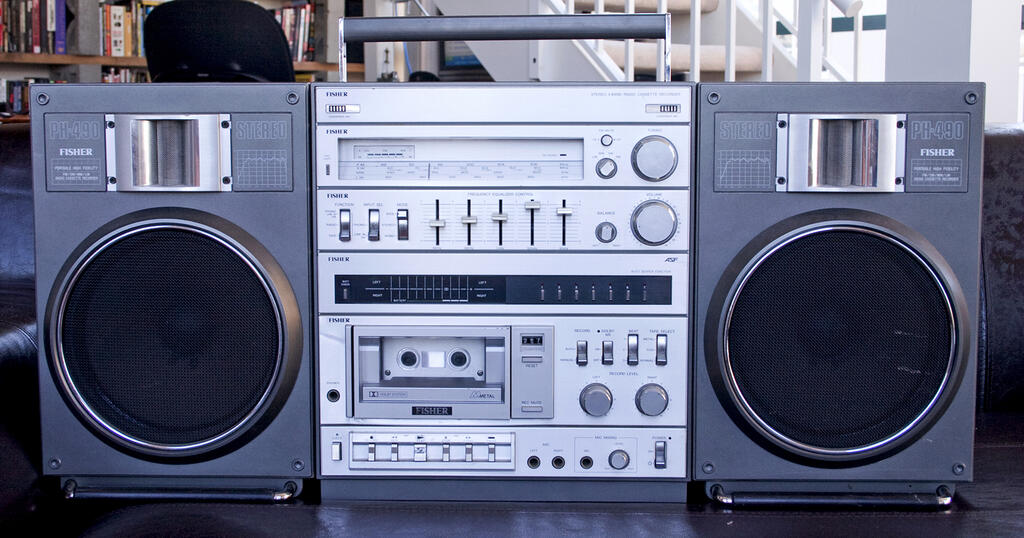
Fisher also got into the game, their major contributions were the massive PH-490(Image 8) and PH-492(over 30” long,15”tall), almost identical units that had two very significant innovations: one, they had detachable speakers, so the speakers could be places further apart to get true stereophonic sound, and they had individual cases so they could resonate with better acoustics having their own cabinets. The other important feature they brought to the industry was a 5 band equalizer to further refine sound to the individual taste. With an EQ, it essentially had a pre-amp, and with enclosed speakers, the Fishers were great sounding big heavy units that reeked of quality you were able to tweak.

Fisher also made a very unusual unit called the SK-300, a cassette deck with detachable speakers and a removable synthesizer keyboard(Image 9)! You could adjust all aspects of your synth sound--pitch, tone, and length of notes, you could change the sound so it can be almost any instrument as well. You can also use the onboard beats to provide a backdrop while you play the keyboard overtop and record the whole arrangement using the cassette deck!

Other companies also made keyboard synthesizers as well, not surprisingly, Casio made the KX-101(Image 10), and Sharp made the GF-990 with a double deck and a pop out “music processor.”
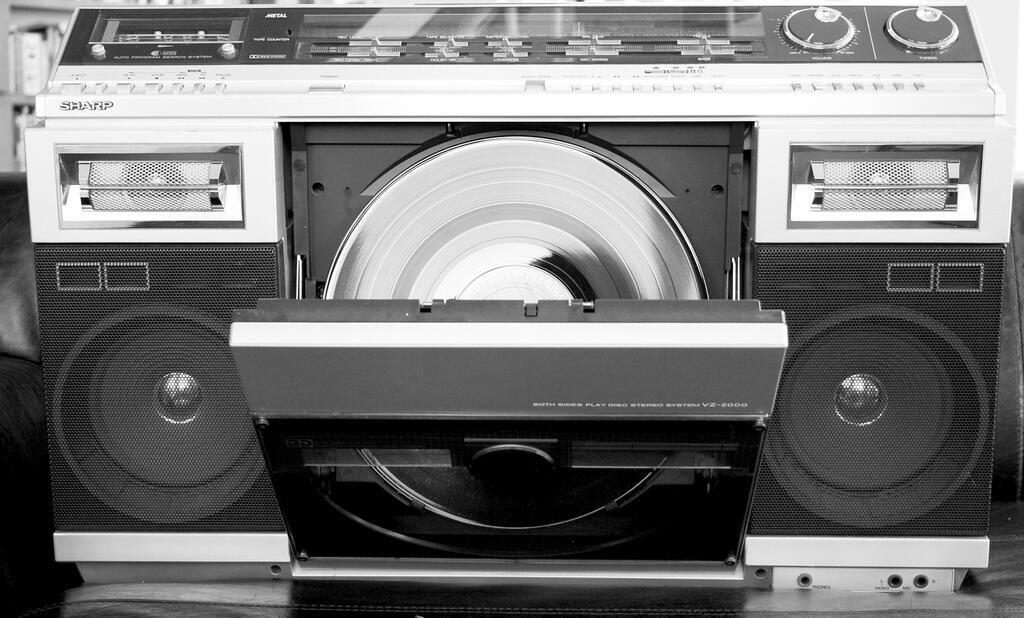
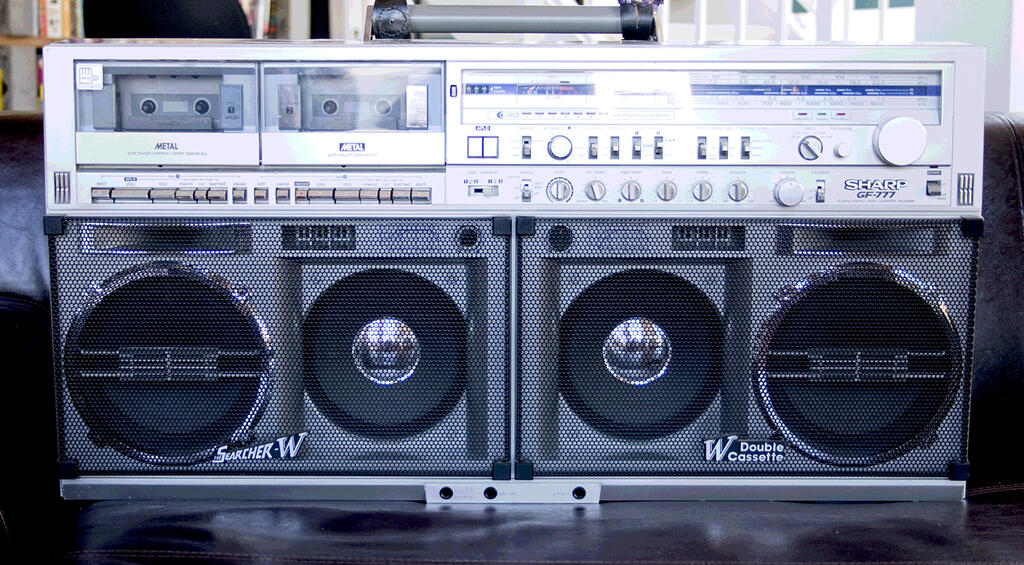
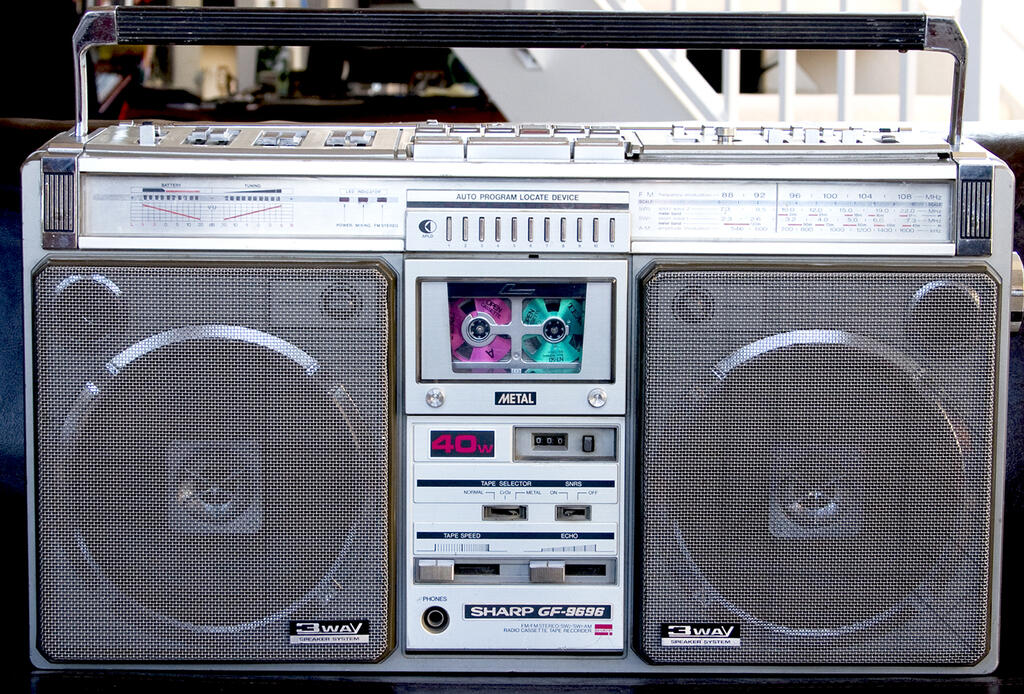
Sharp was again a leader in design and innovation with the VZ-2000(Image 11), a massive, heavy unique player that had a single cassette deck, radio, and a dual stylus linear tracking turntable. This unit allowed one to play BOTH sides of the record without turning the record over, essentially an autoreverse feature, but with a record. Sharp also had the famous GF-777(Image 12), a giant 4 woofer(two mid ranges) and 2 tweeter monster with twin decks in the upper left corner, and removable speaker grilles. The other innovation was that the main woofers had individual bass controls as well as a general bass control and a loudness button. The GF-9696(Image 13), a beautiful looking machine also had individual bass controls, and had pitch control to adjust tape speed for different recordings.

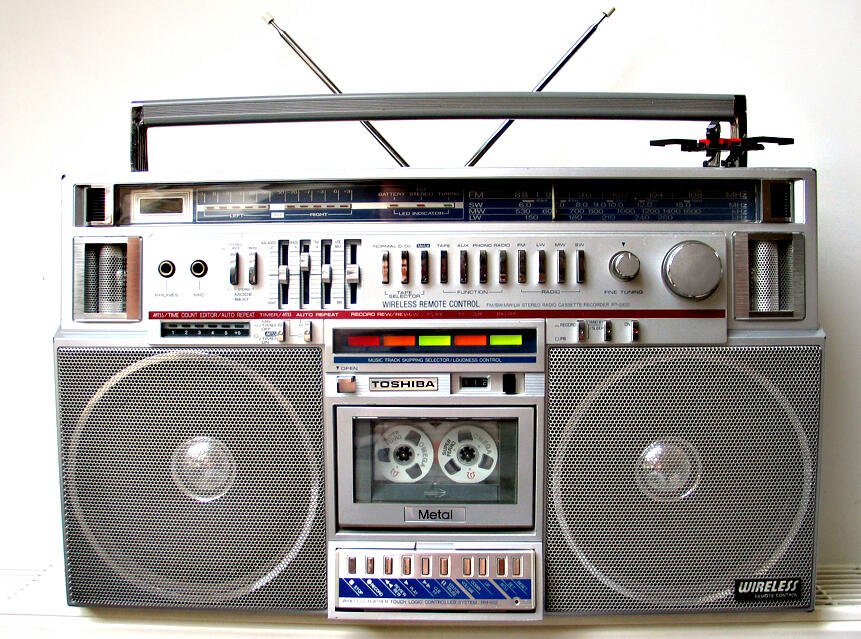
Toshiba also produced a monster very similar to the GF-777 called the WX-1 Bombeat RT-S983(Image 14). This unit had a very unusual configuration for detachable speakers, dual decks, woofers, tweeters and passive radiators similar to the one in the Aiwa. This is perhaps the heaviest radio in existence, also with pitch control and a bass booster system as well, great looks and a great name, Bombeat! Toshiba again showed their innovation with another model, the RT-S932 (Image 15), which has one of the most significant technical and design innovations: a built in wireless remote control that ejects from the unit with the push of a button.
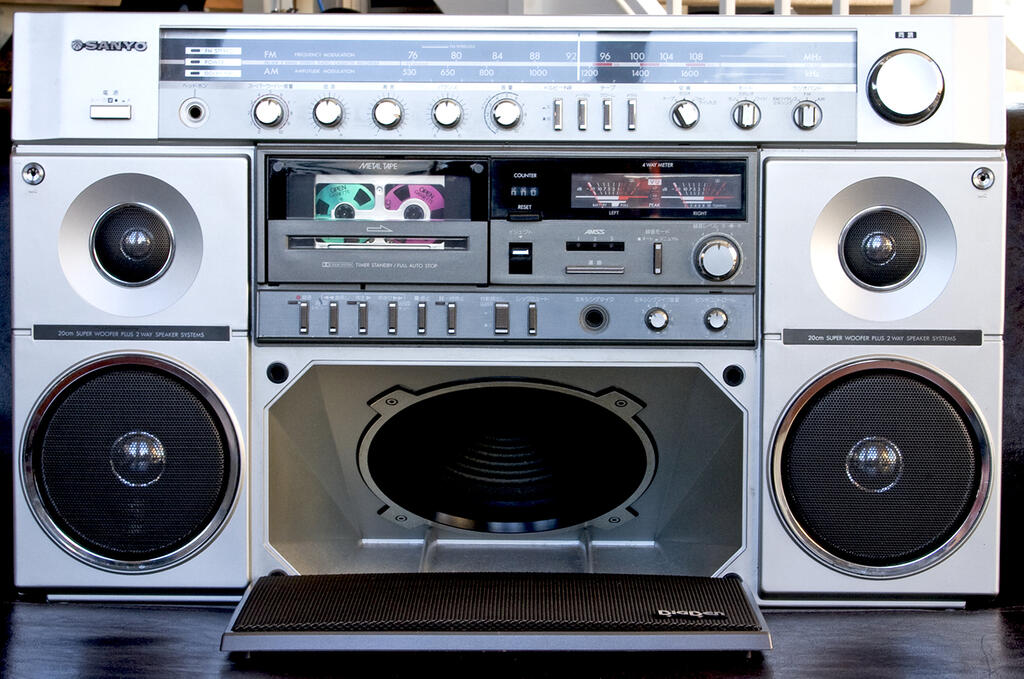
Sanyo made several quality boxes, perhaps the best among them was the massive Big Ben(Image 16). The Big Ben or MX960 had a stylistic innovation that is common place today: the single subwoofer! It had two tweeters, two midranges, and an 8 inch sub with an individual bass control. To house the sub, they tilted the woofer and made the case deeper, which allowed the speaker to point to the ground on an angle. A beautiful unit and unusual looks make this radio very collectible today.
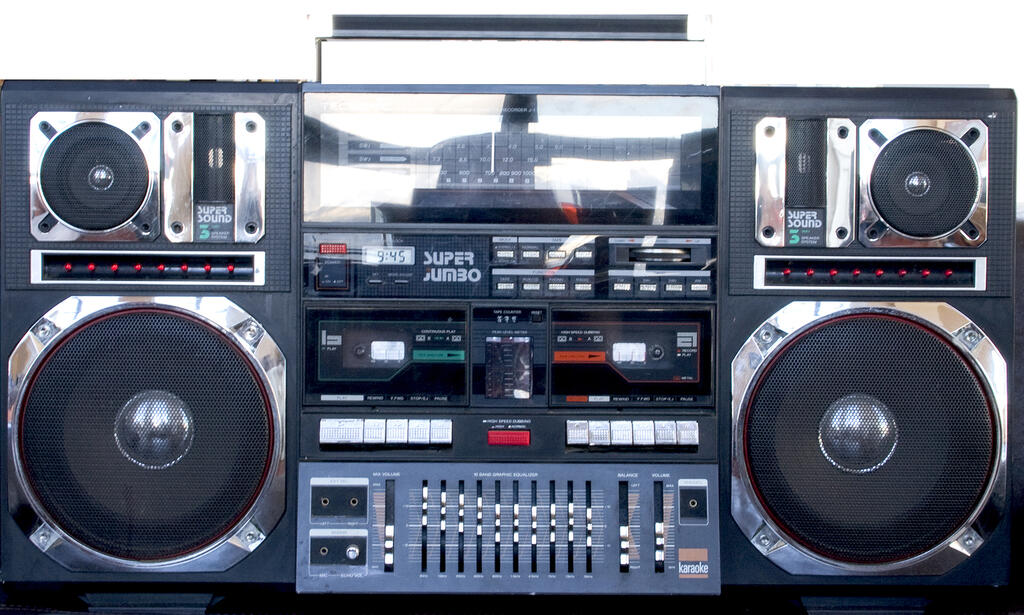
Other lesser known companies also weighed in and perhaps the most famous boombox of its time was one of these and was made so by Spike Lee. “Do the Right Thing” was a seminal film about broiling racial issues in Brooklyn and the object that sparked the riot on the hottest day of the summer was the giant radio belonging to Radio Raheem. He strutted the streets, conquering all those he met with his main weapon—a volume slider. The radio he used to slay all comers was a Promax J-1 Super Jumbo(Image 17), a monster with a ten band EQ and 3 pairs of speakers including 8” woofers. In reality, the cheaper build quality of this radio is less than impressive, but its black case and crazy light display win it style points for certain. Despite its great size, the cheaper plastic makes it ½ the weight it could be—much easier to carry around and duel unsuspecting rivals!
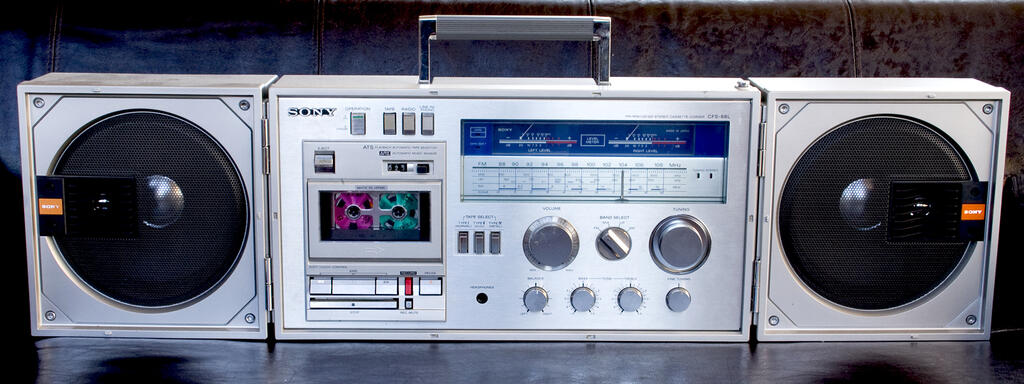
Sony was able to weigh in with an unusual boombox. Sony made the CFS-88(Image 18), a unit that was designed to be closed up like a suitcase for transport, or opened up to reveal a 36” monster with 8 inch woofers. In its closed version, all the components were safely shielded. It bridged the space between the “for the street radios” as they grew bigger and flashier, and the portable component units that had handles, thus were portable, but which were made to deliver true hifi sound as well.
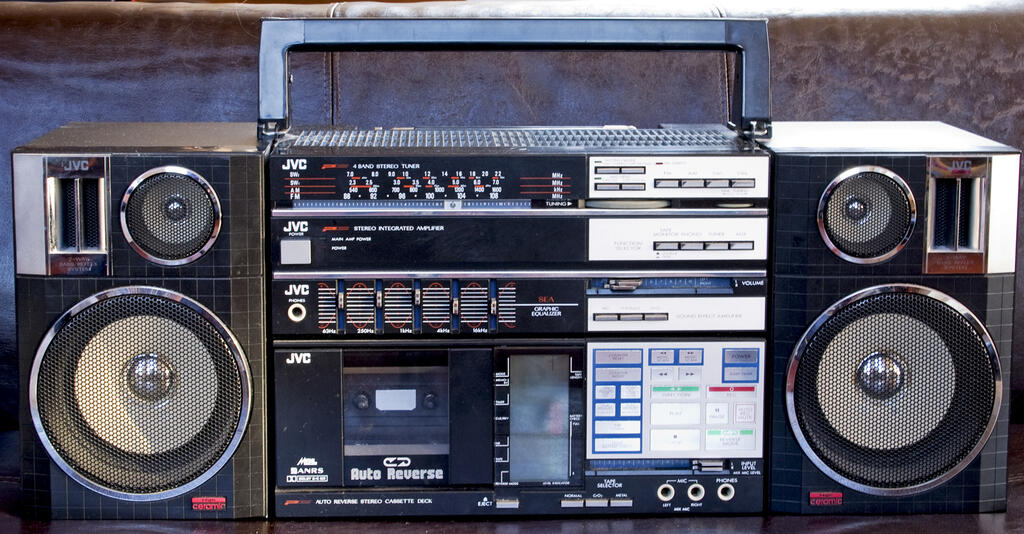
As portable radio desires changed, so did their design. JVC again was back in the driver’s seat in 1982with the multi piece PC or portable component systems. The PC-5, divided into five pieces with a separate radio, tape deck, and amplifier. This radio was promoted by that other famous quintuplet, the Harlem Globetrotters(Image 19). JVC followed up with another superb “executive” component system, the PC-55/550(Image 20). These units were portable, but really they were meant to be separated and used at home as high quality mini stereos. This unit had many special features, Dolby B and C, a 5 band EQ, speakers with ceramic woofers, wooden speaker cases for better quality sound, and most innovatively an illuminated LCD panel display that showed the many functions and options of the unit. Great sound, although ever so slightly bass shy, this multi component unit was a wonderful sounding for all sorts of music, and has one of the best tape decks ever constructed in a portable.
When I think about the 80’s and portable radio culture, I realize how different the world is today. The world of sharing music in parks and on city streets now resides in cyberspace as we share in anonymity online. The radio that marked this change from public music “broadcasting” to private consumption was the JVC PC-100 a mini unit with a detachable walkman. Now you could share your music in the public sphere, or keep it private by ejecting the cassette deck and plugging headphones into it. In many ways the descendant of the walkman today is the MP3 player, the ubiquitous Iphone (or whatever smartphone). Indeed, all the radios I have mentioned here were all built with the ability to plug a portable media player into them, so you can easily plug your POD into these radios and mix the digital age with the warmth of analogue amplification and sound.
Today, when you think that the Iphone is the best thing to happen to music and communication ever, remember that 25 years ago, playing your music was a public phenomenon. We blasted our favorite jams and drowned out the competition, or went to a party and rocked it with a few tapes, a big radio and maybe even decks plugged into it. That was how we injected the public sphere with music and soul, making converts and sometimes enemies, back in the day…
PEACE
Text by James Phillips

